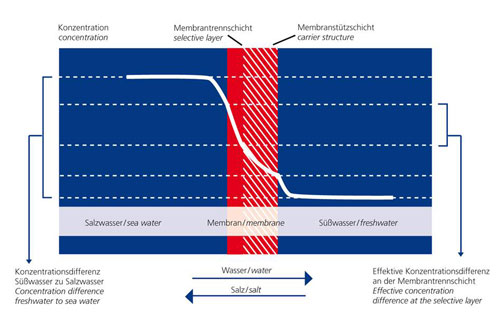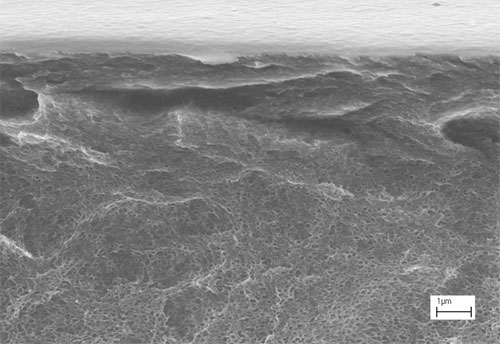In an osmosis power plant, two water flows with different salt contents are separated by a semi-permeable membrane. The membrane is permeable for water while salt is rejected, with the effect that water continuously transfers to the high salt content side, causing an increase in pressure. The solution can then be depressurized via a turbine, producing electrical energy.
This principle has been known since the early 1970s [1], but until now has not found commercial application, due to the lack of suitable membranes. The membranes tested to date have been too expensive, their water transfer too low and salt leakage too high. However, against a background of rising energy prices and climate change considerations, the carbon-emission-free generation of energy using osmotic power plants (e.g. 70-MW-power plant [2]) has become highly topical.
 Fraunhofer Institute for Interfacial Engineering and Biotechnology IGB
Fraunhofer Institute for Interfacial Engineering and Biotechnology IGB
